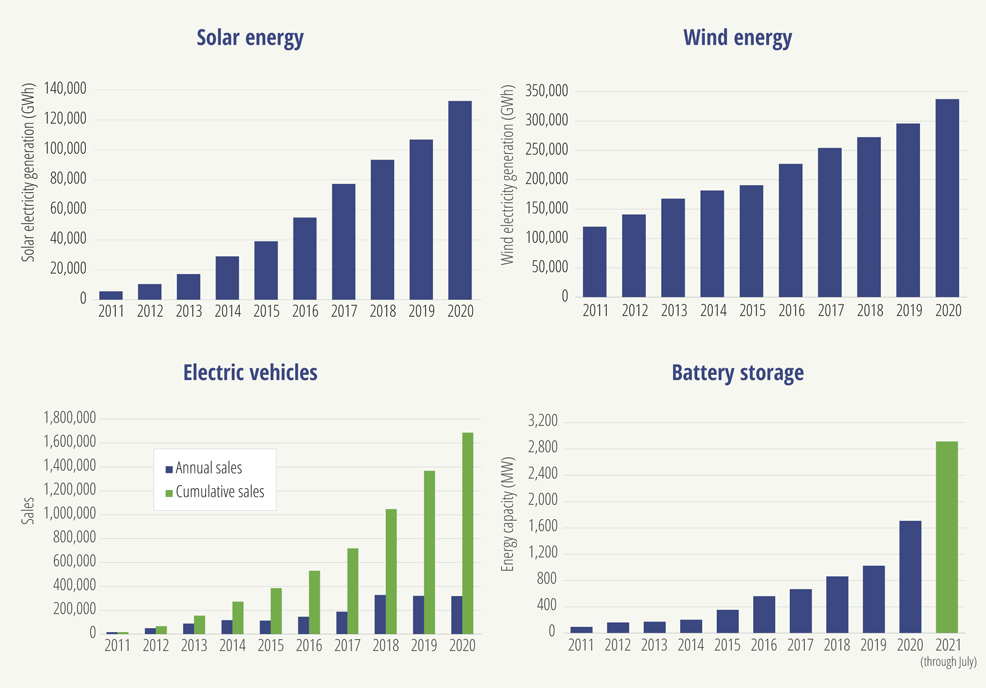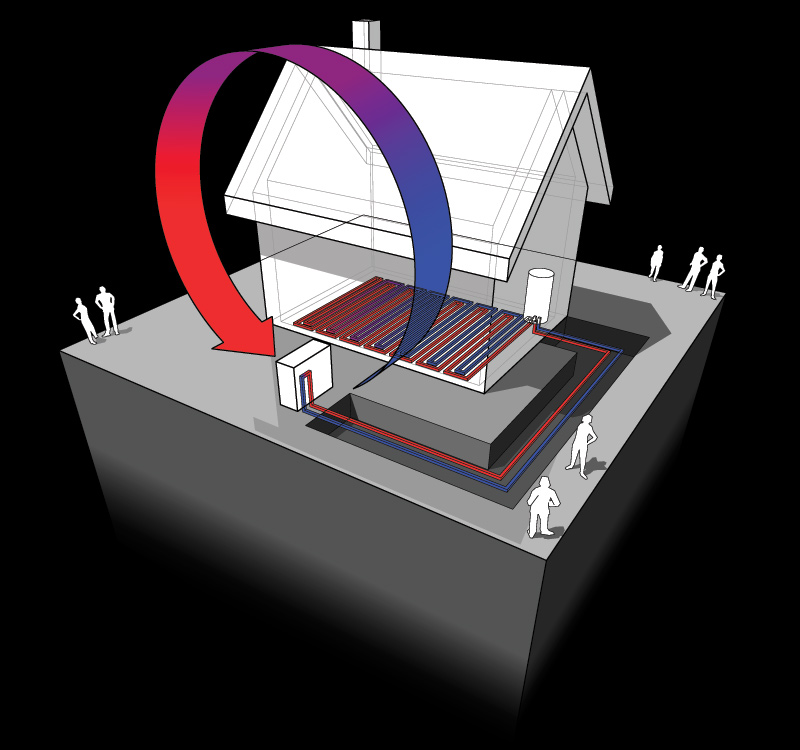
11th November 2021 Clean energy could supply 100% of U.S. electricity by 2035 A new report, published this week, highlights the explosive growth in solar, wind, electric vehicles, and other clean tech in the United States.
Environment America, a non-profit dedicated to environmental research, has published its latest report: Renewables on the Rise 2021. It finds that if wind, solar and geothermal power continue to grow at their current annual rate of 15%, renewables could meet all U.S. electricity needs by 2035. This finding comes as leaders in Congress work to advance legislation that would invest in the nationwide transition to clean power, and nine states have already enacted legislation committing to 100% clean electricity. "Renewable sources like wind and solar are poised to play a starring role in America's energy future," said Susan Rakov, Chair of Environment America Research & Policy Center's clean energy program. "And as these clean energy sources produce more and more of our power, they set the stage for other new technologies – like electric cars and heat pumps – to replace dirty and outdated ones, all while relying on clean power. That's how we create a better, cleaner future." The report details progress between 2011 and 2020 in six areas: solar, wind, efficiency, electric vehicles, battery storage and electric heat pumps. The key highlights include: • Solar power capacity has seen a 23-fold increase since 2011, enough to power more than 12 million average American homes. • Wind power has nearly tripled since 2011, enough to power more than 31 million homes. In 2020, wind accounted for 8.4% of the nation's electricity. • Energy efficiency programs are now saving enough electricity to power more than 2.5 million homes. • From 2011 to 2020, the cumulative number of battery electric and plug-in hybrid vehicles sold in the U.S. grew 100-fold to nearly 1.7 million. Plug-in electric vehicle sales surpassed 2 million in 2021. • Battery storage capacity expanded more than 18-fold from 2011 to 2020 and grew by 67% in 2020 alone. • As the efficiency of heat pumps continues to improve, they have become an attractive option across the country. Shipments of efficient air-source heat pumps nearly doubled between 2011 and 2020, increasing by 10% in 2020 alone. Around one in ten U.S. homes now include a heat pump.
Along with a national overview, the report highlights individual states that have made the most progress in adopting solar and wind energy; increasing battery storage capacity; improving energy efficiency; and transitioning to electric vehicles. "States are locking into a clean energy race to the top," said Emma Searson, Director of the 100% Renewable Campaign at Environment America. "As states prioritise clean energy technologies, they both realise the benefits and inspire their neighbours – and the nation – to pick up the pace." California, Texas, and North Carolina saw the biggest solar power growth from 2011 to 2020, while Texas, Oklahoma, and Iowa topped the charts for wind power. California, Texas, and Illinois have added the most battery storage since 2011. In terms of energy efficiency programs, the states of Maryland, Rhode Island, and Massachusetts have achieved the most improvement. California, Florida, and New York top the rankings for both cumulative electric vehicle sales and public EV charging ports. "In this last decade, America has proven that we can power our homes, businesses and industry with clean energy. We're on the cusp of a dramatic shift toward power that doesn't pollute," said Searson. "But we didn't arrive here by magic; forward-thinking people and their legislators demanded it. As national leaders debate how best to invest in the future of our nation, they should take a cue from these states and focus on helping clean energy thrive."
Credit: Environment America
Comments »
If you enjoyed this article, please consider sharing it:
|








